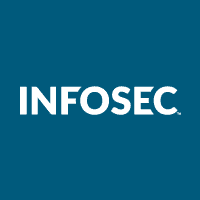CertNexus CyberSec First Responder: Certification, exam and training details
According to IBM, the average time to detect and contain a data breach is 280 days with an average cost to a company of $3.86 million. Those who deal with such breaches are an organization’s cybersecurity “first responders.”
These persons may be part of a cybersecurity incident response team (CSIRT) or act alone. They work to monitor and detect security incidents in information systems and networks and to then execute a proper response to such incidents. The first responder is a challenging role in a landscape that is continually evolving and that impacts all types of organizations across the world.
The job of a first responder is an exciting but demanding one. If you have between three to five years of experience working in network security or as part of a CERT/CSIRT/SOC team, holding the CertNexus CyberSec First Responder (CFR) certification is a useful way to demonstrate your practical knowledge of malicious attacks and the mitigating measures.

Save 10% on your exam voucher
Overview of CertNexus CFR certification
The current CFR exam version, CFR-310, tests an understanding of malicious threats against critical information within a variety of critical infrastructures. It does this across five domains (% weight of each domain shown in brackets).
- Domain 1.0: Threats and attacks (24%)
- Domain 2.0: Data collection and analysis (23%)
- Domain 3.0: Incident response methods, tools and techniques (22%)
- Domain 4.0: The Incident response process (18%)
- Domain 5.0: Vulnerability assessment (13%)
Each domain tested builds towards an overall view of an individual in terms of first responder capability. As far as an employer is concerned, a person who has achieved CFR certification demonstrates a deep understanding of security issues and how to detect and respond to those threats.
Who should take the CFR exam?
The exam itself has no specific prerequisites that examinees must meet. However, it is designed for those who have hands-on experience in information system protection practices. The exam will test your knowledge of the evolving threat landscape of critical infrastructures and what measures and processes are available to respond to these threats.
Typical roles that benefit from having CFR certification include:
- Systems analyst
- Network analyst
- Incident analyst
- Security analyst
- System administrator
- Network administrator
- Incident responder
- Information security and IT auditor
- Network security engineer
- Network defense technician
- Information systems security engineer
CertNexus sets out a list of prerequisites that are strongly recommended to ensure CFR exam success, broken down into areas, these prerequisites include knowledge of:
- The cybersecurity landscape
- Risk management frameworks
- How to assess a cybersecurity posture
- The identification of cybersecurity threat types and how to use vulnerability assessments
- Cybersecurity analysis and the use of tools to analyze security data
- The investigation of cybersecurity incidents and basic security forensics
- The application of remediation and containment in response to cybersecurity incidents.
- Cybersecurity policies and procedures
- Compliance and regulations in cybersecurity
CFR exam objectives
The CFR exam domains cover everything from the types of threats to how to investigate and mitigate those threats.
Domain 1.0: Threats and attacks
This domain tests four key objectives:
Objective 1.1: Compare and contrast various threats and classify threat profiles
This objective tests knowledge of the main targets and threat actors as well as motives for committing cyberattacks. This section of the exam also looks at the implications of an attack on an organization (e.g., financial losses and non-compliance issues).
Objective 1.2: Explain the purpose and use of attack methods and techniques
This objective tests the knowledge of various cyberattack tactics and techniques.
Objective 1.3: Explain the purpose and use of post exploitation tools and tactics
This objective tests understanding of how cyberattacks use post-exploitation tools, such as command and control and lateral movement techniques.
Objective 1.4: Given a scenario, perform ongoing threat landscape research and use data to prepare for incidents
This objective covers scenario-based tests that look at all the available tools and intelligence gathering exercises to prepare for incidents.
Domain 2.0: Data collection and analysis
The four key objectives that this domain tests are:
Objective 2.1: Explain the purpose and characteristics of various data sources
This objective tests knowledge of the various parts of an information system where data logs can reside.
Objective 2.2: Given a scenario, use real-time data analysis to detect anomalies
This objective tests the collection, audit and analysis of the logs collected across a network.
Objective 2.3: Given a scenario, analyze common indicators of potential compromise
This objective tests the ability to assess various indicators of compromise (IOC).
Objective 2.4: Given a scenario, use appropriate tools to analyze logs
This objective tests the knowledge of the various tools used to analyze logs and security event indicators.
Domain 3.0: Incident response methods, tools and techniques
The four key objectives tested by this domain include scenario-based tests:
Objective 3.1: Given a scenario, use appropriate containment methods or tools
This objective tests knowledge of what methods and tools are available to contain cyber threats. It includes areas such as allowlists/blocklists, firewalls and endpoint security solutions.
Objective 3.2: Given a scenario, use appropriate asset discovery methods or tool
This objective tests a variety of discovery methods and tools.
Objective 3.3: Given a scenario, use Windows tools to analyze incidents
This objective tests know-how of specific Windows tools such as Regedit to analyze incidents.
Objective 3.4: Given a scenario, use Linux-based tools to analyze incidents
This objective tests know-how of specific Linux tools such as Nmap to analyze incidents.
Domain 4.0: The incident response process
The four key objectives tested by this domain include scenario-based tests that focus on incident response capability:
Objective 4.1: Given a scenario, execute the incident response process
This objective tests knowledge of the full incident response process from preparation through to post-incident.
Objective 4.2: Explain the importance of best practices in preparation for incident response
This objective tests best practices in incident response and planning.
Objective 4.3: Identify applicable compliance, standards, frameworks and best practices
This objective is all about standards and frameworks that offer important guidance and requirements for first responders.
Objective 4.4: Explain the importance of concepts that are unique to forensic analysis
This objective tests how to perform forensic analysis, an important part of a first responder’s knowledge base. It covers knowledge of all aspects of forensic analysis, including the tools of the trade.
Domain 5.0: Vulnerability assessment
The two key objectives tested by this domain include:
Objective 5.1: Identify common areas of vulnerability
This objective tests an understanding of where vulnerabilities enter a system.
Objective 5.2: Identify the steps of the vulnerability assessment process
This objective tests an understanding of the processes involved, from planning to conducting a vulnerability assessment.
CFR exam details
The CFR exam is a multiple-choice exam comprising 100 questions. A passing score is 70% or 71%, depending on the form of the exam taken (in-person or online at Pearson VUE test centers). The examinee is given 120 minutes to complete the exam.
Once you pass the exam, your certification status is valid for three years. To maintain certification, you will need to retake the most current version of the CFR exam before the end of the three years.
The CFR exam is compliant with ANSI and ISO/IEC 17024:2012 standards. The exam is a stepping stone to other certifications as it is approved by the U.S. Department of Defense (DoD) to fulfill Directive 8570/8140 requirements for the following certifications:
- CSSP Analyst
- CSSP Infrastructure Support
- CSSP Incident Responder
- CSSP Auditor

Save 10% on your exam voucher
How to prepare for the CFR exam
The CFR exam tests an examinee’s knowledge of the threats and mitigative measures available to protect information systems. As such, preparation is key to exam success. The following methods are useful when preparing for the CFR exam:
- Learning guides that cover the five domains of the CFR exam
- Practice exams that give you sample example questions
- Hands-on labs to practice in real or simulated IT environments
- Feedback from professional tutors that guide you on your readiness for the exam
Training courses like Infosec’s CertNexus CFR learning path are another option to help prepare for your exam.
Sources
- Cost of a Data Breach 2020, IBM
- First Responder Exam Blueprint, CertNexus




